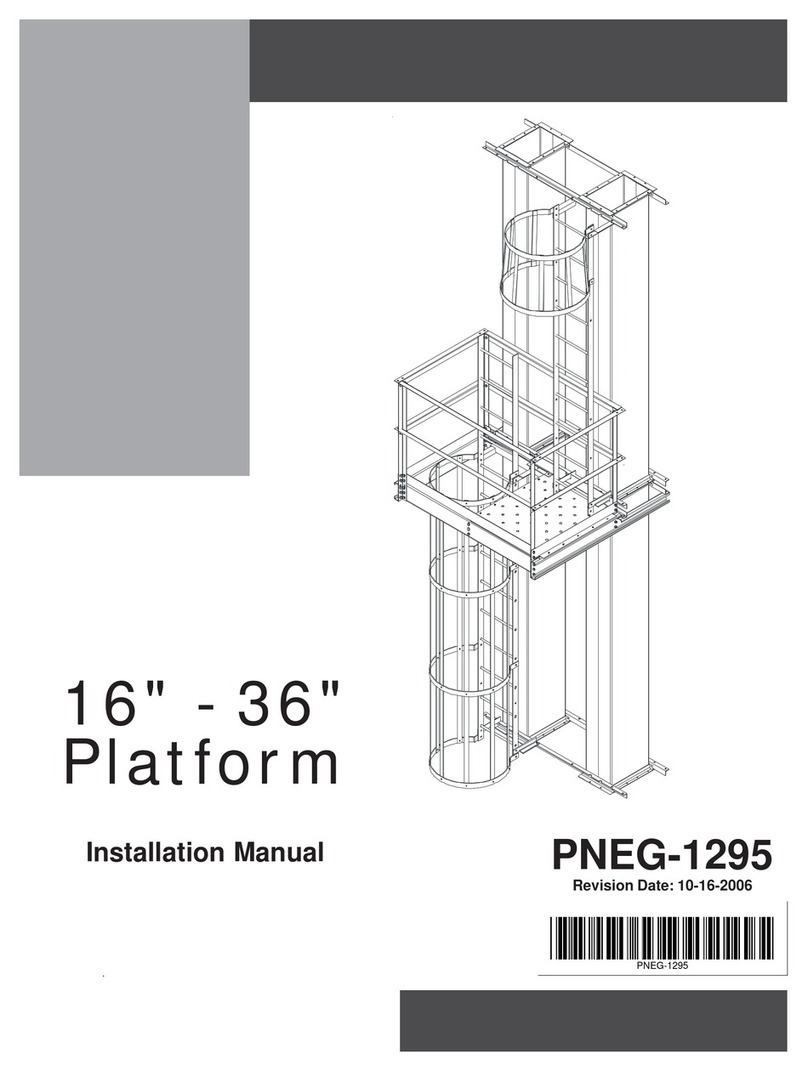
Table of Contents
PNEG-2116 Bucket Elevator 3
Contents
Chapter 1 Introduction ..........................................................................................................................................4
General Information .............................................................................................................................. 4
General Safety Statements ................................................................................................................... 4
Replacement Parts ................................................................................................................................ 4
Chapter 2 Safety .....................................................................................................................................................5
Safety Guidelines .................................................................................................................................. 5
Cautionary Symbols Definitions ............................................................................................................ 6
Safety Cautions ..................................................................................................................................... 7
Safety Sign-Off Sheet ......................................................................................................................... 11
Chapter 3 Decals ..................................................................................................................................................12
Chapter 4 Installation ..........................................................................................................................................16
Receiving Inspection ........................................................................................................................... 16
Pre-Installation Preparation ................................................................................................................. 16
Elevator Foundation ............................................................................................................................ 16
Elevator Guying or Bracing ................................................................................................................. 17
Elevator Intake .................................................................................................................................... 18
Elevator Discharge .............................................................................................................................. 19
Positioning Trunk Sections for Ladder ................................................................................................ 19
Elevator Belt Selection ........................................................................................................................ 19
Elevator Erection (Assembly) .............................................................................................................. 20
Ladder Assembly with Safety Cages .................................................................................................. 23
Typical Small Head Service Platform Assembly ................................................................................. 25
Typical Large Head Service Platform Assembly ................................................................................. 25
Typical Head Service Hatch Assembly ............................................................................................... 26
Belt and Bucket Installation ................................................................................................................. 27
Belt Splicing ........................................................................................................................................ 32
Hood Installation ................................................................................................................................. 34
Drive Installation .................................................................................................................................. 34
Chapter 5 Operation ............................................................................................................................................35
Initial Belt Tracking .............................................................................................................................. 35
Rubber Throat Slide Adjustment ......................................................................................................... 37
In-Service Belt Tension ....................................................................................................................... 38
Elevator Bucket Filling ......................................................................................................................... 39
Chapter 6 Maintenance and Repair ....................................................................................................................41
General Maintenance .......................................................................................................................... 41
General Housekeeping and Periodic Inspection ................................................................................. 41
Lubrication ........................................................................................................................................... 42
Adjustment and Repair Procedure ...................................................................................................... 43
Chapter 7 Warranty ..............................................................................................................................................45




























